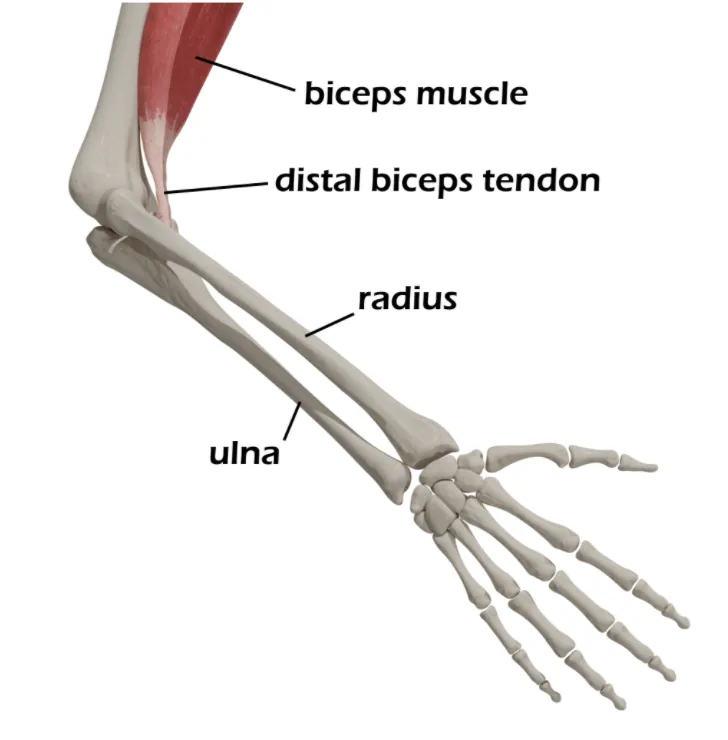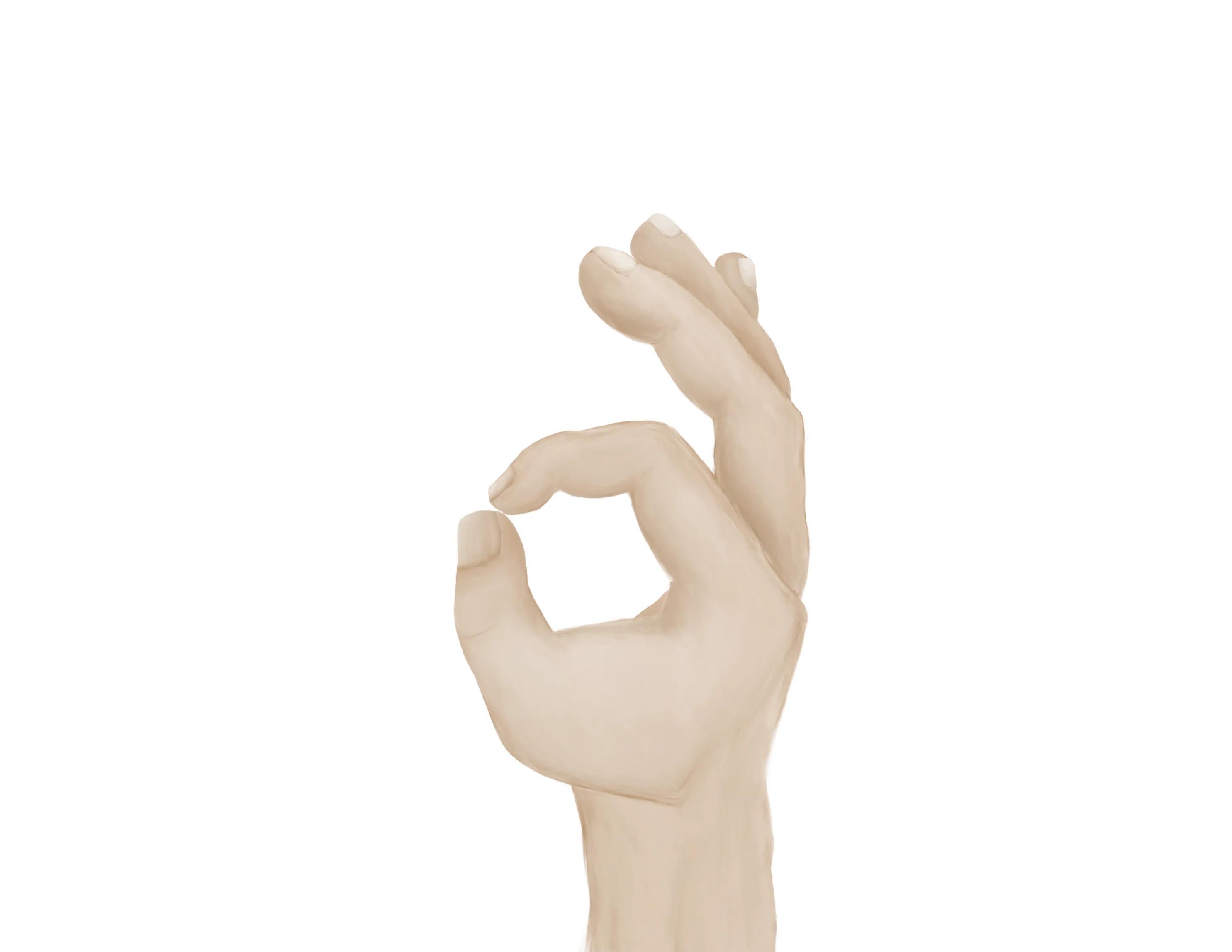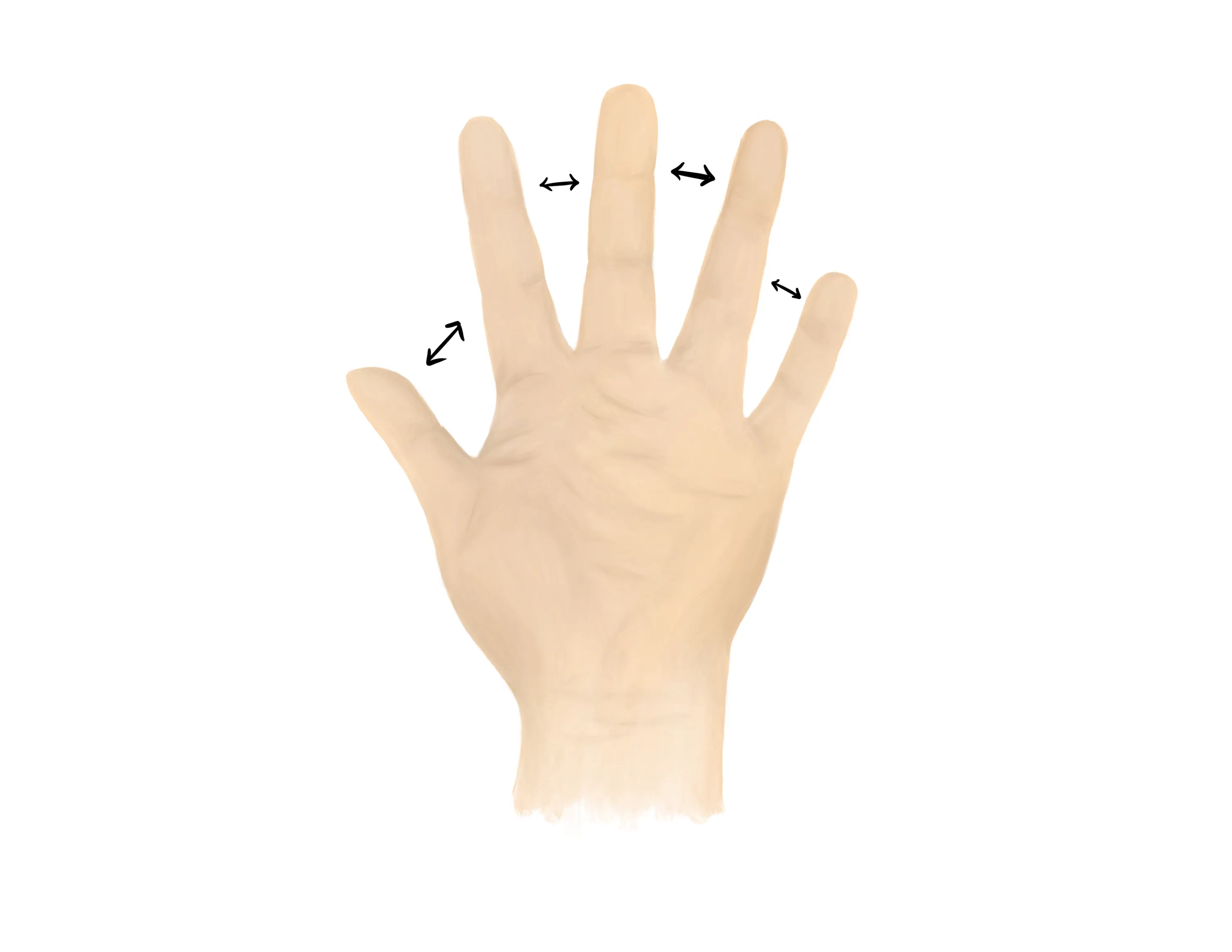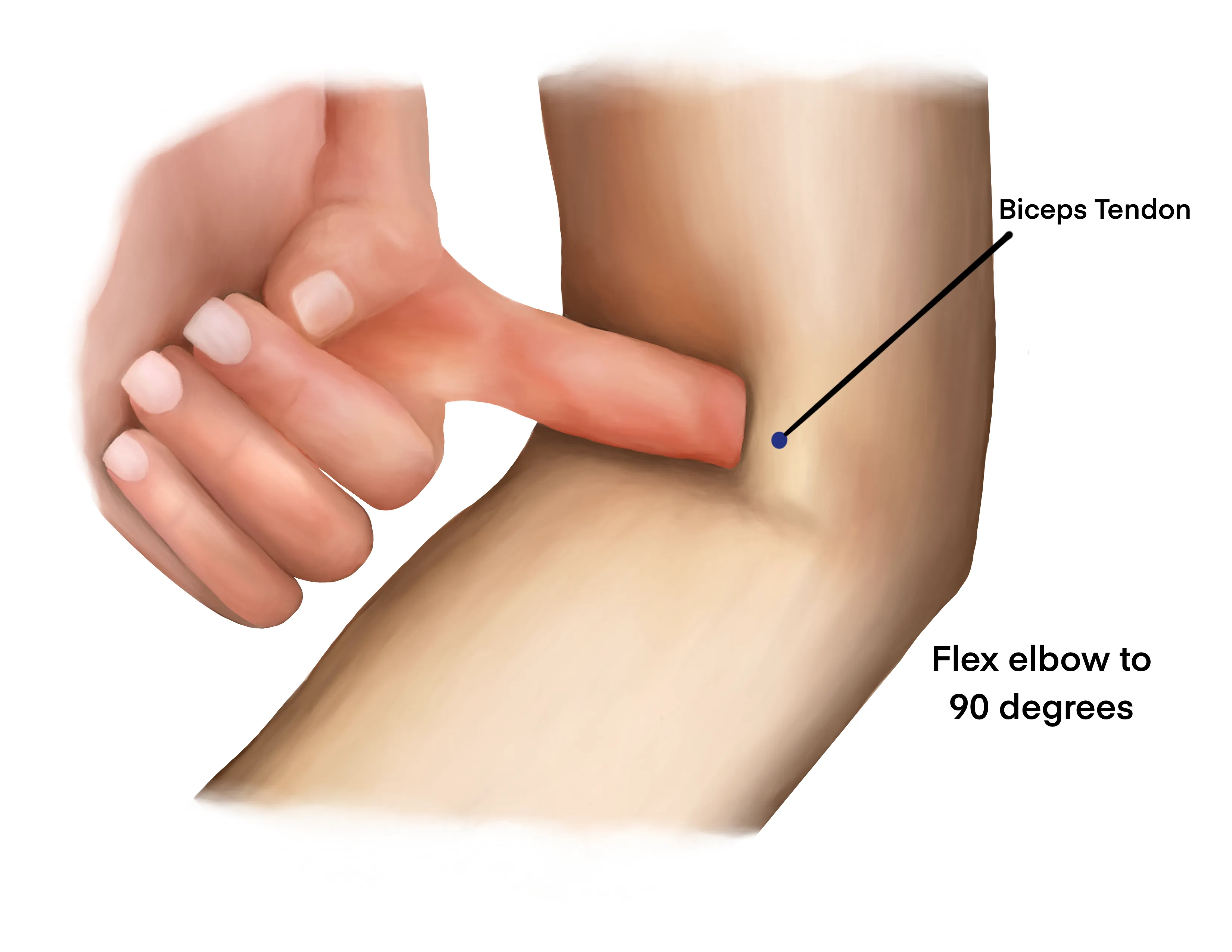Distal Bicep Tendon Rupture
- Pain and swelling on the anterior aspect of the elbow following an injury is concerning for a biceps tendon rupture
- Significant weakness with supination will be observed
- Brachialis is a major flexor at the elbow so do not be fooled by relatively strong elbow flexion (supination is a better assessment for the biceps)
- These patients can be place in a sling and discharged with close orthopaedic follow-up
- Distal bicep tendon ruptures are treated surgically in active, low risk patients
- Mechanism
- Patients will often describe a popping sound upon injury
- Often occurs during eccentric contraction with supination and flexion
- Timing of injury
- Other locations of pain/Associated injuries
- May have residual pain along humerus
- Numbness/tingling
- Hand dominance
- Profession
Vitals
- “Reverse Popeye deformity” - Lump like appearance due to retraction, especially prominent during elbow flexion with an apparent gap near the distal insertion site
- Anterior elbow ecchymosis and bruising
- Tenderness upon palpation of tendon insertion site at the radial tuberosity
Motor Exam:
- Musculocutaneous Nerve
- Flexion and supination at the elbow
- Supination strength will be diminished more than flexion strength
- Biceps muscle is the strongest supinator
- Median Nerve/ Anterior interosseous nerve (AIN)
- Opposition of the thumb
- Opponens innervated by the median nerve - helpful to assess if concern for acute carpal tunnel syndrome
- Flexion of wrist, fingers, thumb
- “A-OK sign” = AIN
- Tests flexion of thumb IP joint (FPL) and flexion of index DIP joint (FDP)
- Radial nerve/ Posterior interosseous nerve (PIN)
-

- Extension of wrist, fingers, thumb
- “Thumbs up” = PIN
- Tests extension of thumb IP and MCP joints (EPL))
- Palm on flat surface and lifting/extending thumb off the surface is also a good test for PIN (tests extension of thumb MCP joint (EPL))
- Ulnar nerve
- Median, Radial, Ulnar nerve distributions
- Radial artery, Ulnar artery
- If having difficulty with palpation radial artery, find a doppler
- Pulse decreased - Obtain noninvasive vascular imaging and consult vascular surgery if abnormal
- Capillary refill to digits
- May have decreased ROM at the elbow due to pain and swelling
- Active supination will be significantly weaker than the contralateral side
- Active Flexion may be relatively preserved because of the functioning brachialis
- AP/Lateral views of shoulder and elbow
- Ultrasound to detect presence/absence of tendon
- User dependent but can show the retracted or partially torn tendon
- MRI - not obtained in the ED
- May be obtained by orthopedics to confirm the diagnosis and/or to rule out concomitant injuries depending on the clinical scenario
Medical Decision Making
Distal Biceps Rupture:
*** is a *** y/o ***-hand dominant ***M/F with hx of *** who presents with an injury to the *** arm which occurred while mechanism***, found to have a rupture of the distal biceps tendon. On exam, the patient is neurovascularly intact with tenderness to palpation at the antecubital fossa. The patient had notably weak active supination compared to the contralateral side and lacked a palpable tendinous insertion at the radial tuberosity. Radiographs reveal ***. The patient was placed in a sling and will follow up with orthopedic surgery within 1 week.
Distal Biceps Rupture:
- WB status: Non-weight-bearing injured upper extremity
- Diet: Regular
- Analgesia: short course of narcotic pain medication, tylenol (scheduled)
- Ex: 5mg oxycodone q4 - 15 pills
- Immobilization
- Sling for comfort
- Disposition: Home with follow up in orthopedic surgery within 1 week
- Most surgeons prefer to operate within a few days to reduce complexity of the procedure (due to tendon retraction) and optimize outcomes
Materials

Sling
Procedure Walkthroughs:
- Place sling on the injured arm with large strap around the contralateral trapezius
- Loosen or tighten the strap to ensure the arm is maintained at 90 degrees with the elbow in the closed end of the sling
Procedure Notes:
PROCEDURE NOTE Application of a Velpeau Sling
PRE-PROCEDURE DIAGNOSIS: Distal bicep tendon rupture
POST-PROCEDURE DIAGNOSIS: Same (refer above)
PROCEDURALIST: ***
ANESTHESIA: None
NAME OF PROCEDURE: Application of a Velpeau Sling
PROCEDURE IN DETAIL:
The risks and benefits of the procedure were discussed at length with the patient. Risks discussed included but were not limited to post-procedural pain, numbness, and stiffness. Following informed verbal consent after discussion of risks and benefits, the patient agreed to proceed with the procedure. A timeout was performed.
A velpeau splint was applied with the arm in 90 degrees of flexion. The long arm strap was adjusted to fit comfortably on the contralateral trapezius region. After the sling was applied neurovascular status was checked and found to be consistent with baseline.
ESTIMATED BLOOD LOSS: none
COMPLICATIONS: none
DISPOSITION:
Discharge from the ED with follow up with orthopedic surgery
PRE-PROCEDURE DIAGNOSIS: Distal bicep tendon rupture
POST-PROCEDURE DIAGNOSIS: Same (refer above)
PROCEDURALIST: ***
ANESTHESIA: None
NAME OF PROCEDURE: Application of a Velpeau Sling
PROCEDURE IN DETAIL:
The risks and benefits of the procedure were discussed at length with the patient. Risks discussed included but were not limited to post-procedural pain, numbness, and stiffness. Following informed verbal consent after discussion of risks and benefits, the patient agreed to proceed with the procedure. A timeout was performed.
A velpeau splint was applied with the arm in 90 degrees of flexion. The long arm strap was adjusted to fit comfortably on the contralateral trapezius region. After the sling was applied neurovascular status was checked and found to be consistent with baseline.
ESTIMATED BLOOD LOSS: none
COMPLICATIONS: none
DISPOSITION:
Discharge from the ED with follow up with orthopedic surgery
| Common ICD-10 Codes | Brief Description |
|---|---|
| S46.221 | Laceration of muscle, fascia and tendon of other parts of biceps, right arm |
| S46.222 | Laceration of muscle, fascia and tendon of other parts of biceps, left arm |
| S46.299 | Other injury of muscle, fascia and tendon of other parts of biceps, unspecified arm |
| S46.211A | Strain of muscle, fascia and tendon of other parts of biceps, right arm, initial encounter |
| S46.212A | Strain of muscle, fascia and tendon of other parts of biceps, left arm, initial encounter |
| M66.821 | Spontaneous rupture of other tendons, right upper arm |
| M66.822 | Spontaneous rupture of other tendons, left upper arm |





